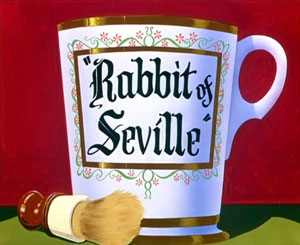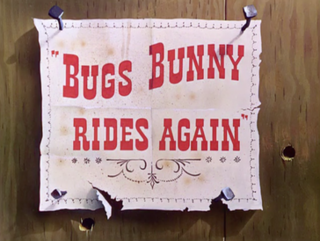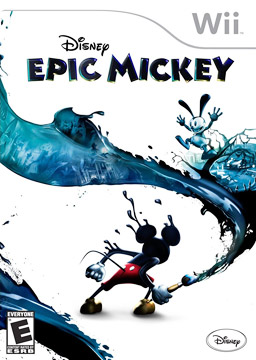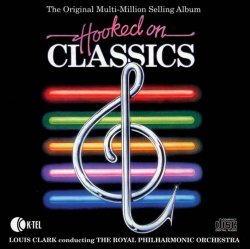
The Incredible Machine (TIM) is a series of video games in which players create a series of Rube Goldberg devices. They were originally designed and coded by Kevin Ryan and produced by Jeff Tunnell, the now-defunct Jeff Tunnell Productions, and published by Dynamix; the 1993 through 1995 versions had the same development team, but the later 2000–2001 games have different designers. All versions were published by Sierra Entertainment. The entire series and intellectual property were acquired by Jeff Tunnell-founded PushButton Labs in October 2009. PushButton Labs was later acquired by Playdom, itself a division of Disney Interactive, so as of now the rights are held by The Walt Disney Company.

La gazza ladra is a melodramma or opera semiseria in two acts by Gioachino Rossini, with a libretto by Giovanni Gherardini based on La pie voleuse by Théodore Baudouin d'Aubigny and Louis-Charles Caigniez. The Thieving Magpie is best known for the overture, which is musically notable for its use of snare drums. This memorable section in Rossini's overture evokes the image of the opera's main subject: a devilishly clever, thieving magpie.
Dynamix, Inc. was an American developer of video games from 1984 to 2001, best known for the flight simulator Red Baron, the puzzle game The Incredible Machine, the Front Page Sports series, Betrayal at Krondor, and the online multiplayer game Tribes.

Rabbit of Seville is a Warner Bros. Looney Tunes theatrical cartoon short released on December 16, 1950. It was directed by Chuck Jones and written by Michael Maltese, and features Bugs Bunny and Elmer Fudd. The nonstop slapstick humor in the short is paced musically around the overture to Italian composer Gioachino Rossini's 1816 opera buffa The Barber of Seville. In 1994, Rabbit of Seville ranked number 12 in a list of "The 50 Greatest Cartoons" released in North America during the 20th century, a ranking compiled from votes cast by 1,000 artists, producers, directors, voice actors, and other professionals in the field of animation.

Sid & Al's Incredible Toons is a puzzle video game developed by Dynamix and released by Sierra On-Line in 1993.
Jeffrey Tunnell is a video game producer, programmer and designer.

The William Tell Overture is the overture to the opera William Tell, composed by Gioachino Rossini. William Tell premiered in 1829 and was the last of Rossini's 39 operas, after which he went into semi-retirement. The overture is in four parts, each following without pause.

Bugs Bunny Rides Again is a 1948 Merrie Melodies animated short directed by Friz Freleng. The short was released on June 12, 1948, and stars Bugs Bunny and Yosemite Sam.

Arthur to Astaroth no Nazomakaimura: Incredible Toons is a 1996 puzzle video game for the Sega Saturn and PlayStation which was only released in Japan. Capcom licensed Dynamix's Sid & Al's Incredible Toons engine with a Ghosts 'n Goblins motif.
"Largo al factotum" is an aria (cavatina) from The Barber of Seville by Gioachino Rossini, sung at the first entrance of the title character, Figaro. The repeated "Figaro"s before the final patter section are an icon in popular culture of operatic singing. The term "factotum" refers to a general servant and comes from Latin where it literally means "do everything".

Il signor Bruschino, ossia Il figlio per azzardo(Signor Bruschino, or The Accidental Son) is a one act operatic farce by Gioachino Rossini to a libretto by Giuseppe Maria Foppa, based upon the 1809 play Le fils par hasard, ou ruse et folie by René de Chazet and Maurice Ourry. The opera was first performed in Venice at the Teatro San Moisè on 27 January 1813.

Rubber hose animation was the first animation style that became standardized in the American animation field. The defining feature is a curving motion that most animated objects possess, resembling the motion and physical properties of a rubber hose. While the style fell out of fashion by the mid-1930s, it has seen a renewed interest since the 2010s.

The All-New Dennis the Menace is an animated series based on the comic strip by Hank Ketcham that aired from September 18 to December 11, 1993 on CBS.
Musical quotation is the practice of directly quoting another work in a new composition. The quotation may be from the same composer's work (self-referential), or from a different composer's work (appropriation).

Epic Mickey is a 2010 platform game developed by Junction Point Studios and published by Disney Interactive Studios for the Wii. It was released in November 2010 in North America and PAL territories and August 2011 in Japan by Nintendo. The game focuses on Mickey Mouse, who accidentally damages a world created by Yen Sid for forgotten characters and concepts and must save it from the Blot. The game features Oswald the Lucky Rabbit, a character created by Walt Disney and Ub Iwerks and originally owned by Universal Pictures; The Walt Disney Company gained ownership of the character in 2006. The game marks the first time that Mickey and Oswald have appeared together.

Stay Tooned! is a 1996 action-adventure video game developed by Funnybone Interactive and published by Sierra On-Line for Microsoft Windows and Macintosh. In the game, the player must navigate through the apartment complex to find the TV remote to zap rogue cartoon characters back into TV Land.

Farmyard Symphony is a 1938 Silly Symphonies animated short film. It can be seen as a precursor to Fantasia due to using various pieces of classical music in one short. The film was directed by Jack Cutting and produced by Walt Disney.

The Incredible Machine is a puzzle video game released in 1993, and the first release in The Incredible Machine video game series. The objective of the game is to create Rube Goldberg machines by arranging collections of objects in a complex fashion, so as to perform some simple task. The Even More Incredible Machine was an extended version of the original, also released in 1993; it had 160 levels, about twice the number of levels in the original game, and had more parts to use in the contraptions.

Hooked on Classics is a classical crossover album recorded by the Royal Philharmonic Orchestra conducted by Louis Clark, released in 1981 by K-tel and distributed by RCA Records, part of the Hooked on Classics series. It was produced by Jeff Jarratt and Don Reedman.















